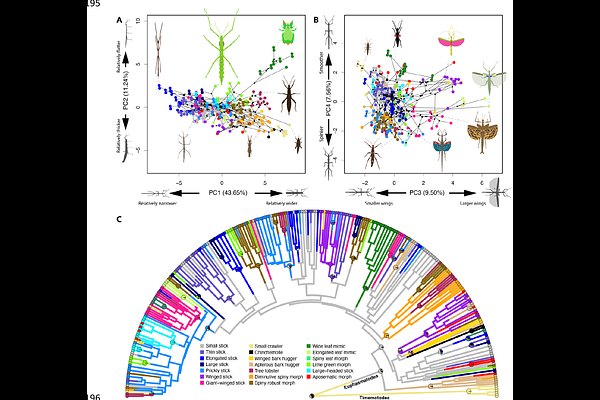Divergence time and environmental similarity predict the strength of morphological convergence in stick and leaf insects

Divergence time and environmental similarity predict the strength of morphological convergence in stick and leaf insects
Boisseau, R. P.; Bradler, S.; Emlen, D. J.
AbstractIndependent evolution of similar traits in lineages inhabiting similar environments (convergent evolution) is often taken as evidence for adaptation by natural selection, and used to illustrate the predictability of evolution. Yet convergence is rarely perfect. Environments may not be as similar as they appear (e.g., habitats scored the same may be heterogenous to the organisms). And lineages can evolve in different ways even when submitted to the same environmental challenges, because responses to selection are contingent upon available genetic variation and independent lineages may differ in the alleles, genetic backgrounds, and even the developmental mechanisms responsible for the phenotypes in question. Both impediments to convergence are predicted to increase as the length of time separating two lineages increases, making it difficult to discern their relative importance. We quantified environmental similarity and the extent of convergence to show how habitat and divergence time each contribute to observed patterns of morphological evolution in stick and leaf insects (order Phasmatodea). Dozens of phasmid lineages independently colonized similar habitats, repeatedly evolving in parallel directions on a 26-trait morphospace, though the magnitude and direction of these shifts varied. Lineages converging towards more similar environments ended up closer on the morphospace, as did closely related lineages, and closely related lineages followed more parallel trajectories to arrive there. Remarkably, after accounting for habitat similarity, we show that divergence time reduced convergence at a constant rate across more than 60 million years of separation, suggesting even the magnitude of contingency can be predictable, given sufficient spans of time.